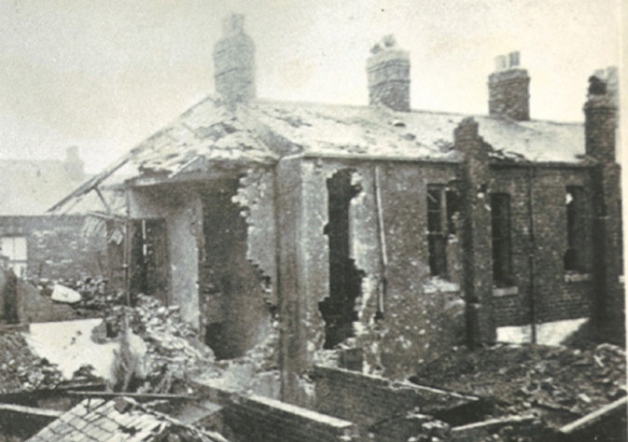On the morning of December 16, 1914, 6 steel-clad German Navy warships saw the north-east coast of England and the fire started shortly after 08:00. Scarborough and Hartlepool were the first towns to be hit, following the arrival of the Imperial German Navy early that morning.
Civilians were shocked to see buildings being destroyed by shells designed to break armored warships. The Bennett family, at 2 Wykeham Street were just getting ready to start a new day when the fire began.
Christopher Bennett told the Scarborough Mercury how his father, his mother and two children were in the house, downstairs that morning, and his father called him saying that the Germans were outside and that he should go and look after his mother. However, before Christopher could had time to arrive downstairs, “it had all happened.” “It was a long time before I realized anything or where I was. I was practically buried in stuff,” said Bennett, aged 25 at the time of the interview. He recalled ‘waking up’ in just a shirt and with one slipper on. After being hit on the front, the house was partly destroyed.
The only survivors in the house were Christopher and his father, however, his brother Albert, his mother Johanna and the two kids, George Barnes, aged 5, and John Ward, aged 10 got buried under the ruins and they all lost their lives soon after that. After more than 500 shells were scattered across Scarborough in only 30 minutes, 17 people were killed and several others were seriously injured.
Children who went to Gladstone Road School had to hide in the cellar, while the St. Martin’s Church roof got destroyed just when preparing for a wedding. But Scarborough wasn’t going to be the only town to go under attack that morning. Only a few minutes later, Hartlepool was attacked by three German warships, about 50 miles away from Scarborough, the BBC News reports.
It was a major target for the enemy, who fired over 1,150 shells over the town, while the resistance was only able to respond with 123 shells, from a coastal defence unit.
Mark Simmons, Hartlepool Museum manager said people were shocked, all families took their belongings and fled inland, while workers inside factories, smashed their way out. “You can see waves of destruction moving across residential areas of Hartlepool and West Hartlepool. Did they target civilians? It is difficult to know – but my feeling is they weren’t worried about it,” said Simmons.
